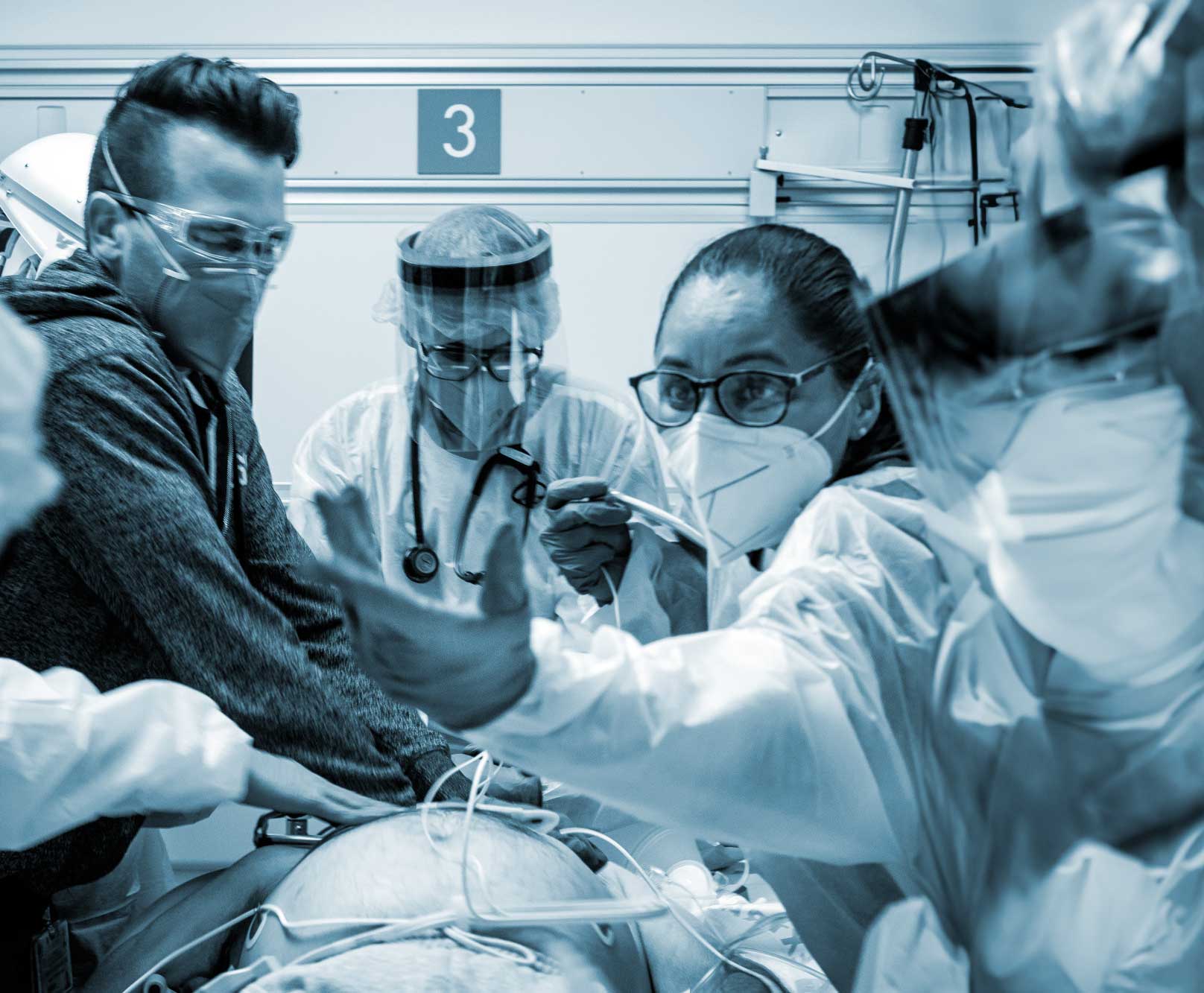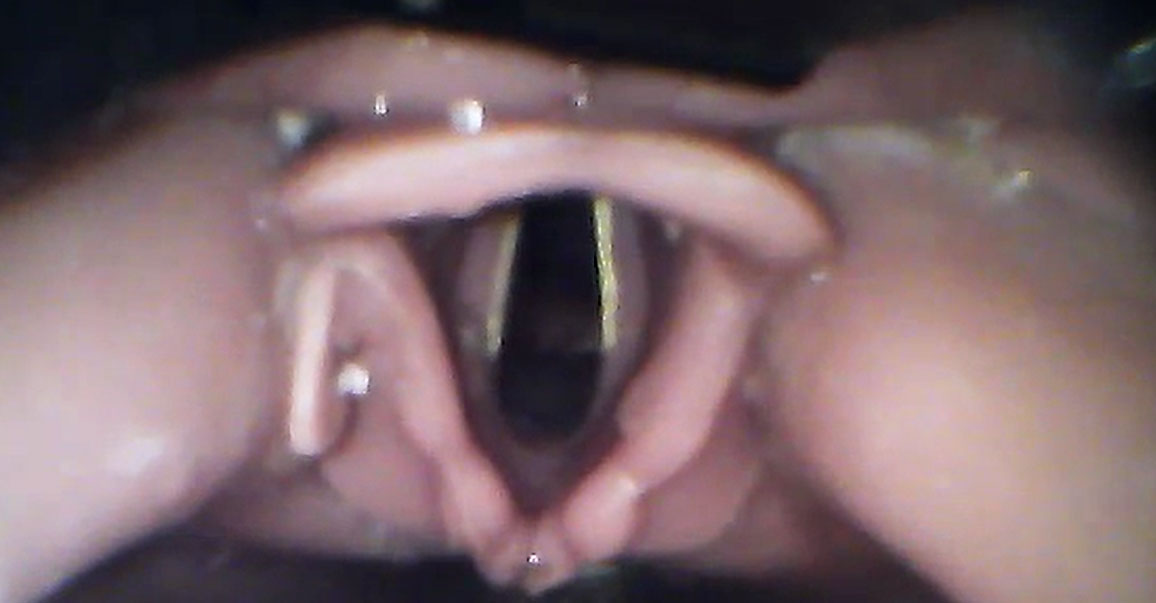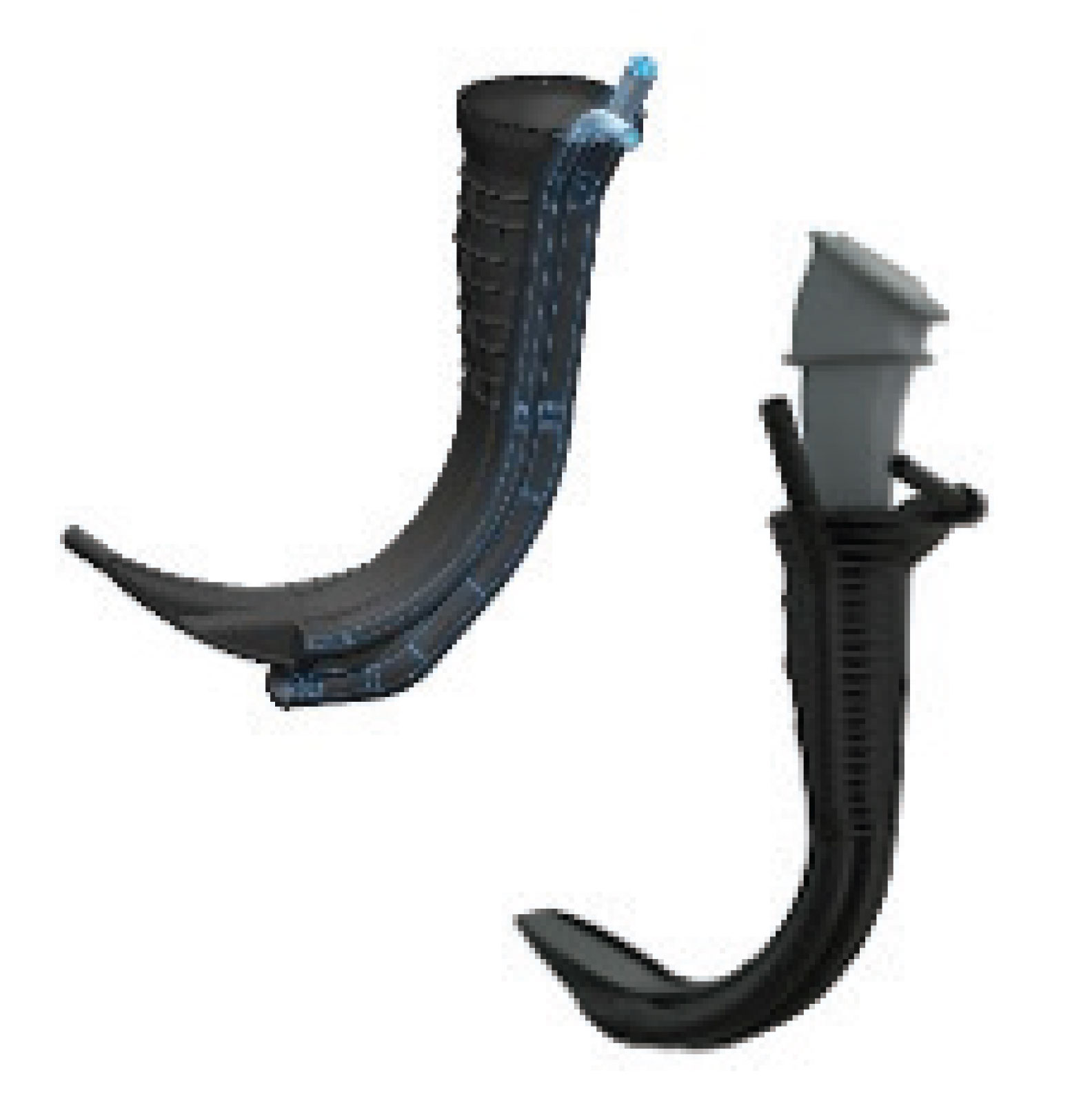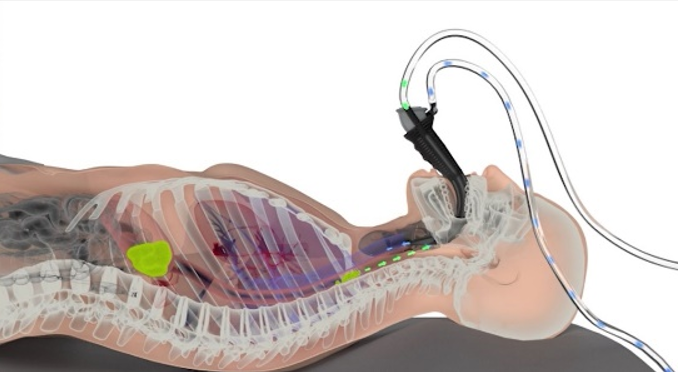
Video Laryngoscope – Enhanced Visualization – Clinical Benefits
The video laryngoscope emerged in the late 20th century, combining a standard laryngoscope blade with a video camera to provide enhanced visualization. This innovation significantly improved airway management and intubation success, particularly in complex cases.

Enhanced Visualization
Problem – Obstructed Vision in Soiled Airways
The camera view on a video laryngoscope can become obstructed by bodily fluids, a common issue in soiled airways that may delay the critical, life-saving procedure of intubation. Any delay in securing the airway on the first attempt—also known as ‘first-pass success’—can increase patient morbidity and mortality.
SOLUTION: The IVOS BOSS G4™
IVOS Medical, Inc. is developing a single-use, custom-molded video laryngoscope sheath designed to enhance intubation safety, particularly for high-risk patients.
This disposable sheath is compatible with existing video laryngoscope platforms and incorporates innovative features to improve functionality in challenging intubation scenarios.

The integrated Breathing Optimization and Suction System (BOSS) enables continuous suction by accommodating various suction options, effectively clearing aspirate and debris from the esophagus and trachea. Additionally, the sheath offers independent oxygen delivery, ensuring a clear tracheal view for precise tube placement and improved first-pass success rates.

VIDEO OF BOSS G4 CLEARING ASPIRATION
FROM VIEWER
BOSS continuously clears the viewing window during intubation, reducing patient risks associated with aspiration and camera visualization occlusions that can delay the procedure. By minimizing the time patients go without oxygen, it improves both the safety and success rates of critical interventions. This capability is vital in emergency, perioperative, and intensive care settings, where achieving first-pass intubation success is paramount.
IVOS Medical’s BOSS platform empowers healthcare providers and first responders, raising the standard of care in intubation and enhancing outcomes in emergency intubation situations.
Our Mission
IVOS Medical is dedicated to revolutionizing airway management with innovative products that equip providers and first responders to excel in challenging emergencies. Guided by clinical expertise and a commitment to improving patient outcomes, we optimize intubation results with cutting-edge technology.
Intubation, Optimized.
IVOS Management Team:
ABOUT IVOS
IVOS Medical, Inc. is an innovative medical device company focused on advancing airway management technology, especially for difficult intubations.
Founded by CEO Gabriel Punsalan, CRNA, MS, IVOS is currently developing the BOSS G4™, a single-use, custom-molded video laryngoscope sheath designed to enhance safety and precision during intubations, particularly in high-risk situations.
Supported by the University of California Irvine Medical Center and NIH Seed Fund, IVOS Medical draws on substantial clinical expertise and research backing. With over $1.9 million in non-dilutive NIH funding, IVOS is committed to setting new standards for emergency intubation, improving both efficiency and patient safety.
At the heart of the BOSS G4 is the Breathing Optimization and Suction System (BOSS™) platform, a patent-pending technology that provides continuous, targeted suction to clear bodily fluids and improve visibility of the trachea, facilitating precise tube placement. The device also allows independent oxygen delivery, a feature that facilitates higher first-pass success rates during critical emergency intubations.
Investors are invited to join IVOS Medical in reshaping emergency medical care by supporting the development of our life-saving technology.
Newsroom
Airway MGMT
Articles
Press
Releases
IVOS IN
THE NEWS
IVOS MEDIA CONTACT:
Joe Waldygo, President
TopSpin Communications
E: joe@topspinpr.com
C: 480-363-8774



